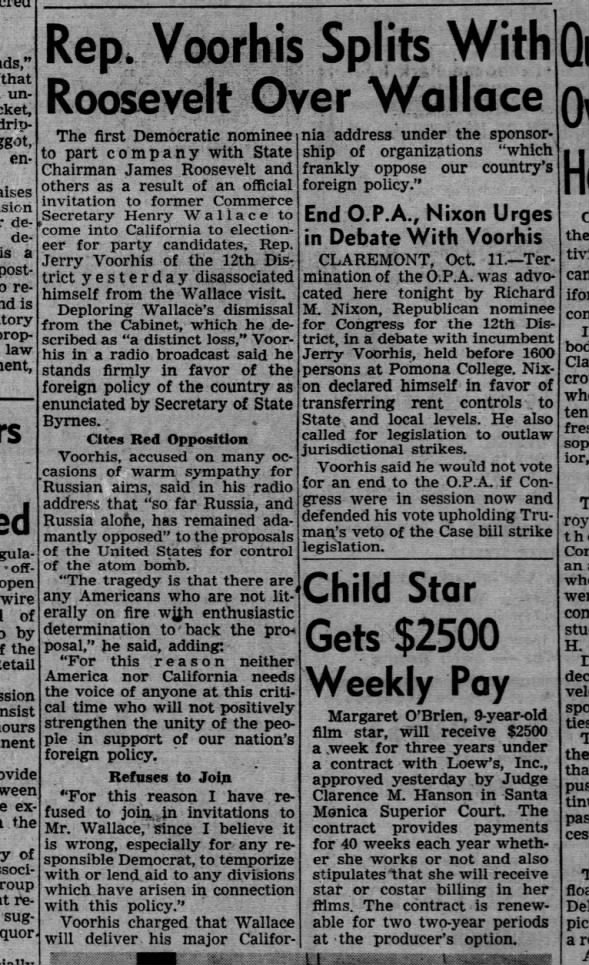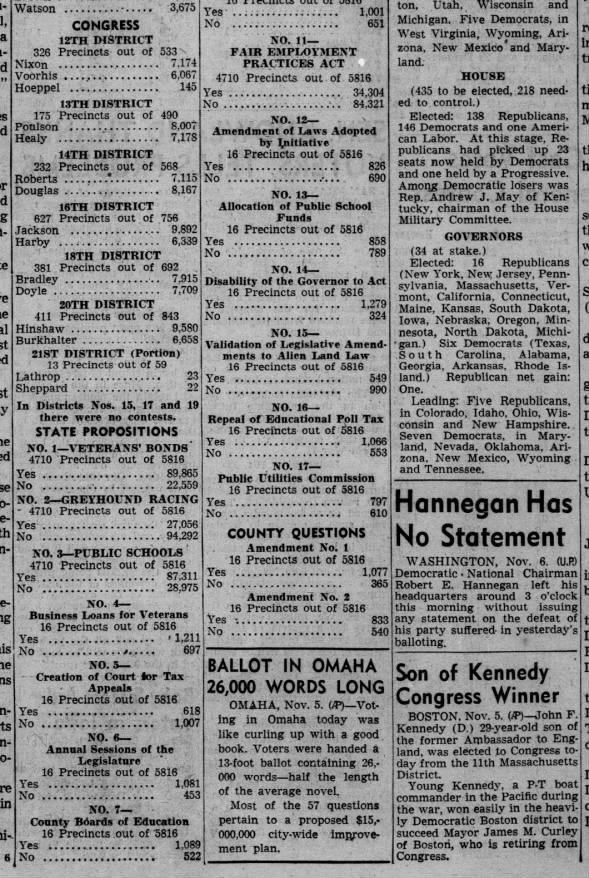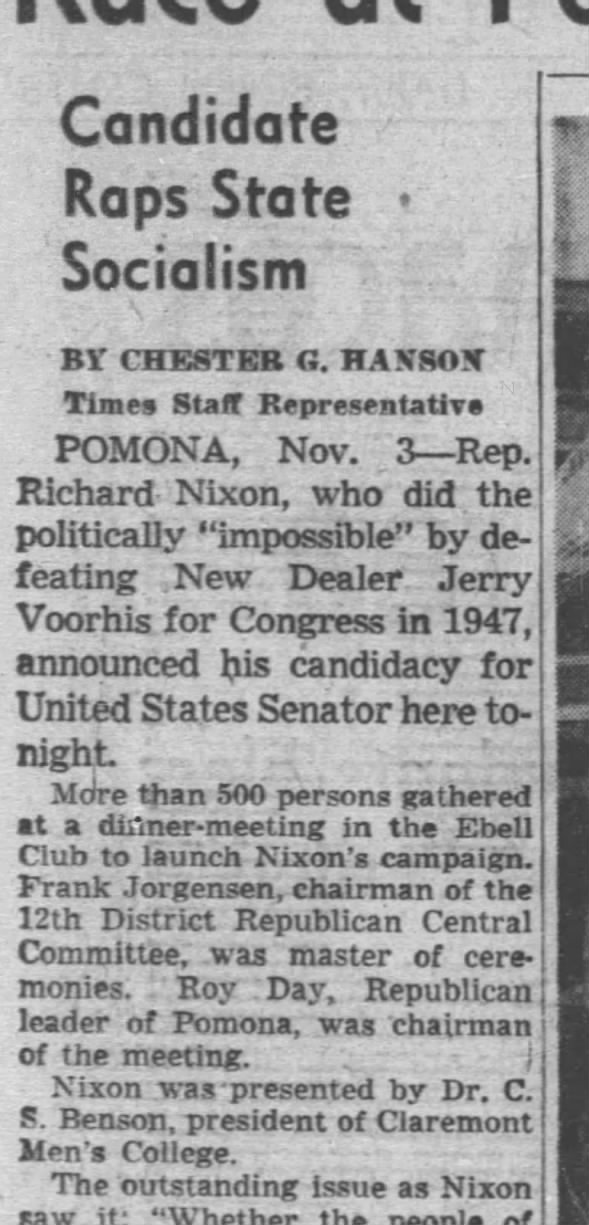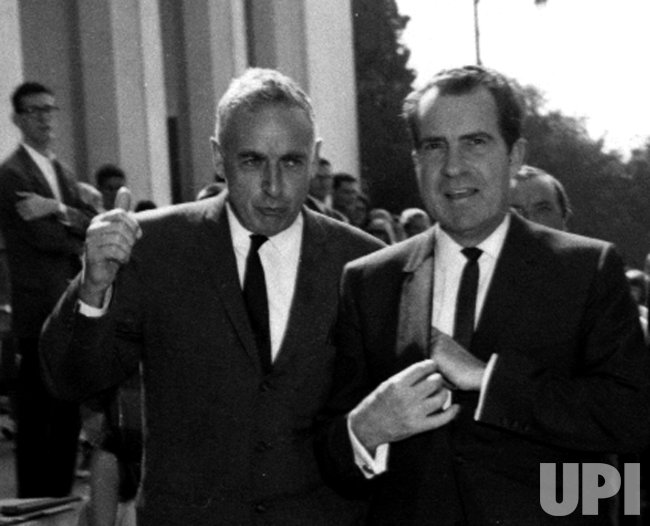Wingert & Bewley became Bewley, Lassleben & Miller
In Richard Milhous Nixon, Roger Morris describes the district:
The district began in the east among the quiet settlements strung out beneath the San Gabriels at the northern rim of the basin. Claremont with its vineyards, shaded campuses, and midwestern Victorian homes gave way to the tiny citrus towns of La Verne, Glendora, and San Dimas; farther west, Monrovia, Duarte, and Arcadia nestled in the foothills...In its own rich valley to the south lay the business and residential center of Pomona ... Across the valley floor lay the old fiftieth Assembly district, more white-walled and red-tiled homes in Covina and West Covina ... El Monte, a larger town of 36,000, was nearby with its walnuts, still more oranges, and one of the basin's famous lion farms. And still farther south ... the district took in the slopes and valleys of Whittier and La Habra.
Jerry Voorhis

Roy P. Crocker was chair of Lincoln Savings and Loan and a benefactor of CMC. In a memo for a 1975 oral history, he recalled:
Herman L. Perry, Manager of the Bank of America branch in Whittier, knew about Richard M. Nixon's ability as a debater when he was in Whittier College. He telephoned to Nixon, who was in Baltimore renegotiating airplane contracts for the U. S. Navy Group, and suggested that he return to California and appear as a prospective candidate before the Fact Finding Committee, consisting of leading Republicans in the 12th Congressional District. Nixon appeared at about the second meeting of the committee and made an instantaneous favorable impression and he was selected as the candidal over seven other aspirants. Nixon received all but eight votes on the final ballot and then the vote was made unanimous. There were three assembly districts in the 12th Congressional District and three members from each district were selected to manage the primary campaign. I was one of the nine members chosen and I was elected Chairman of the Campaign. Roy Day was chosen by the committee as the Campaign Manager..



 debate Sat, Oct 12, 1946 – 9 · The Los Angeles Times (Los Angeles, Los Angeles, California, United States of America) · Newspapers.com
debate Sat, Oct 12, 1946 – 9 · The Los Angeles Times (Los Angeles, Los Angeles, California, United States of America) · Newspapers.com Wed, Nov 6, 1946 – 1 · The Los Angeles Times (Los Angeles, Los Angeles, California, United States of America) · Newspapers.com
Wed, Nov 6, 1946 – 1 · The Los Angeles Times (Los Angeles, Los Angeles, California, United States of America) · Newspapers.comAl Felzenberg:
Nixon's internationalism, anti-communism, and interest in foreign affairs, for example, were evident very early. In his first months in Congress, Nixon took his first trip to Europe as part of a fact-finding tour of postwar conditions assembled by Massachusetts representative (and future secretary of state) Christian Herter. Nixon returned prepared to take on his party's isolationist wing in support of the Marshall Plan. In the last address he ever gave, he vividly recalled the impact that trip had on him. (William Elliott, the Harvard professor who advised the Herter Committee and befriended Nixon, would later help launch the career of another young man of promise, Henry Kissinger.)Los Angles Times 11/4/1949
 Fri, Nov 4, 1949 – 2 · The Los Angeles Times (Los Angeles, California) · Newspapers.com
Fri, Nov 4, 1949 – 2 · The Los Angeles Times (Los Angeles, California) · Newspapers.com

No comments:
Post a Comment